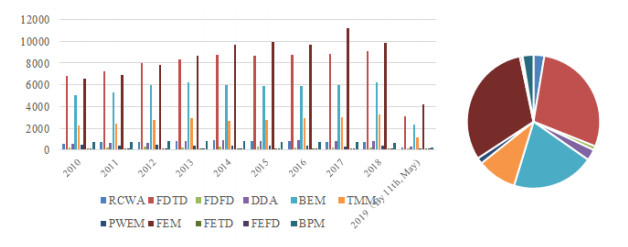

In addition, a software package for computing the actual reflection from a FDTD-PML is provided. Finally, a review of the literature on the application of the PML ABC to other numerical techniques of electromagnetics and to other partial differential equations of physics is provided.

The optimization of the PML ABC is addressed in two typical applications of the FDTD method: first, wave-structure interaction problems, and secondly, waveguide problems. The shape of the mode I got with Comsol is clearly different from the one done with FDTD. I solved for RF (MODE ANALYSIS) and the effective index I got was 3.81.
#Comsol fdtd simulator
Propagation and reflection of waves in the discretized FDTD space are derived and discussed, with a special emphasis on the problem of evanescent waves. FDTD is a simulator within Lumerical’s DEVICE Multiphysics Simulation Suite, the world’s first multiphysics suite purpose-built for photonics designers. I am sure I have no error but I have to check with you (comsol community) in case someone can help me figure out what is going on. I am not sure about the mechanism of how it works in COMSOL. Illustrates the COMSOL setup used for the analysis. Currently, I only use the scattering boundary condition, and without the PML.
#Comsol fdtd code
The implementation of the PML ABC in the FDTD method is presented in detail. A two port network was set up using COMSOL Multiphysics (Figure 1). The Comsol RF module has been compared with the analytical solutions and a FDTD numerical modeling code for a spherical model. The frequency domain and the time domain equations are derived for the different forms of PML media, namely the split PML, the CPML, the NPML, and the uniaxial PML, in the cases of PMLs matched to isotropic, anisotropic, and dispersive media. I thought it would make my task simpler to just export the material data from LUMERICAL FDTD and use it in comsol rather than creating tables for every new material i use on COMSOL. This lecture presents the perfectly matched layer (PML) absorbing boundary condition (ABC) used to simulate free space when solving the Maxwell equations with such finite methods as the finite difference time domain (FDTD) method or the finite element method. Previously i used to use LUMERICAL FDTD tool for simulation, and it has a wealth of material data available in it.


 0 kommentar(er)
0 kommentar(er)
